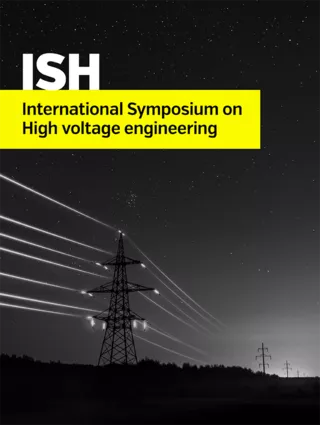Summary
The work aims at experimental study of ionic wind characteristics in the needleplane and the wire-plane electrode systems, which allow creating two different types of flow. We also estimate and compare the efficiency of cooling a horizontal heated plate (grounded electrode) by means of a local axisymmetric jet directed from the needle to the plate center and extended along the wire wind stream, when using the wire electrode. Voltage, polarity and inter-electrode gap are varied. The experimental setup is assembled to provide maintaining the temperature of the plate (its size is 190x100x6 mm) at the constant level of 360 K. The local temperature distribution across the plate surface is registered by an infrared imager. In addition, the air velocity distributions in the interelectrode gap are obtained by the Particle Image Velocimetry method. With the grounded plane temperature fixed, the dependences of heat power drained from the plate surface on the electric power consumed by corona discharge have been obtained. When using the needle electrode, a localized thin (2-3 mm) and fast (up to 8 m/s) ionic wind jet allows cooling heated objects quite efficiently; the maximum heat removal is observed in the area where the stream encounters the heated surface. In the case of using the wire electrode, the ionic wind jet stretches along the wire; the flow rate is lower compared to that from the needle. However, the region of jet collision with the plate, where the maximum local heat removal is attained, is much larger (elongated stripe). This results in 10-15% increase of ionic wind cooling efficiency from the wire compared to the single needle. Moreover, using a wire-plate electrode system allows removing twice more heat power, as the maximum electrical consumed power value is higher and the corona discharge area is wider. The heat power, removed from the plate due to the ionic wind in the experiments, when plate overheat was fixed, was an order larger than the one, removable via natural convection, and was 1-2 orders higher than the electric power spent on sustaining the corona discharge. With increasing voltage, the outgoing heat power grows, and the cooling efficiency, defined as the ratio of the outgoing heat power to the consumed electric power, decreases.
Additional informations
| Publication type | ISH Collection |
|---|---|
| Reference | ISH2017_315 |
| Publication year | |
| Publisher | ISH |
| File size | 2 MB |
| Pages number | 5 |
| Price for non member | Free |
| Price for member | Free |
Keywords
corona discharge, ionic wind, cooling, heat transfer, EHD, PIV method, wire, needle, plate




